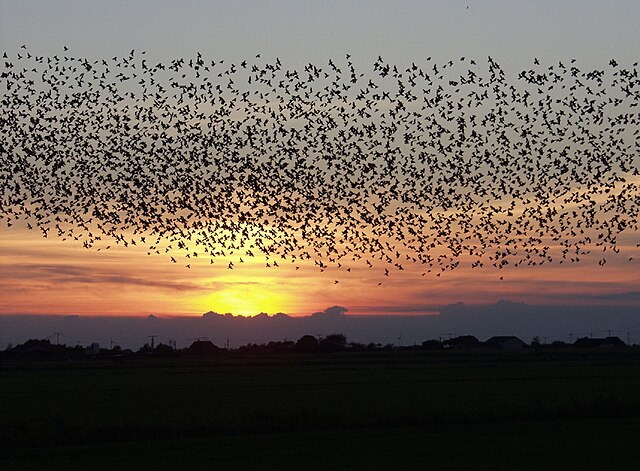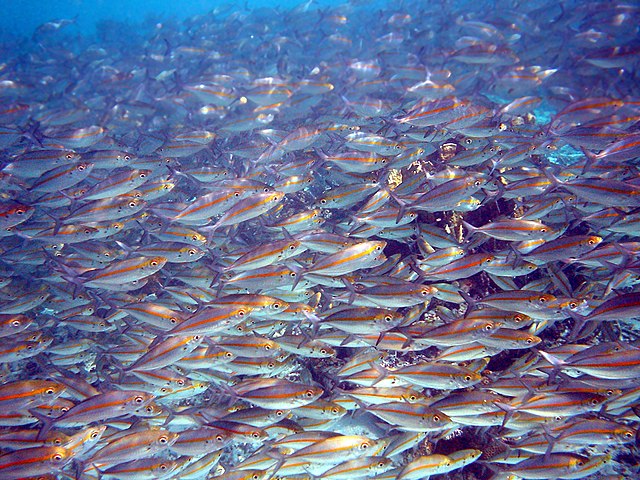Collective animal behavior
Collective animal behaviour is a form of social behavior involving the coordinated behavior of large groups of similar animals as well as emergent properties of these groups. This can include the costs and benefits of group membership, the transfer of information, decision-making process, locomotion and synchronization of the group. Studying the principles of collective animal behavior has relevance to human engineering problems through the philosophy of biomimetics. For instance, determining the rules by which an individual animal navigates relative to its neighbors in a group can lead to advances in the deployment and control of groups of swimming or flying micro-robots such as UAVs.
Sort sol. Starling flock at sunset in Denmark
School of goldband fusiliers
Social behavior is behavior among two or more organisms within the same species, and encompasses any behavior in which one member affects the other. This is due to an interaction among those members. Social behavior can be seen as similar to an exchange of goods, with the expectation that when you give, you will receive the same. This behavior can be affected by both the qualities of the individual and the environmental (situational) factors. Therefore, social behavior arises as a result of an interaction between the two—the organism and its environment. This means that, in regards to humans, social behavior can be determined by both the individual characteristics of the person, and the situation they are in.
A colony of Northern gannet. An example of social behavior.
An adult and infant
Rhesus monkey
An example of helping behavior






